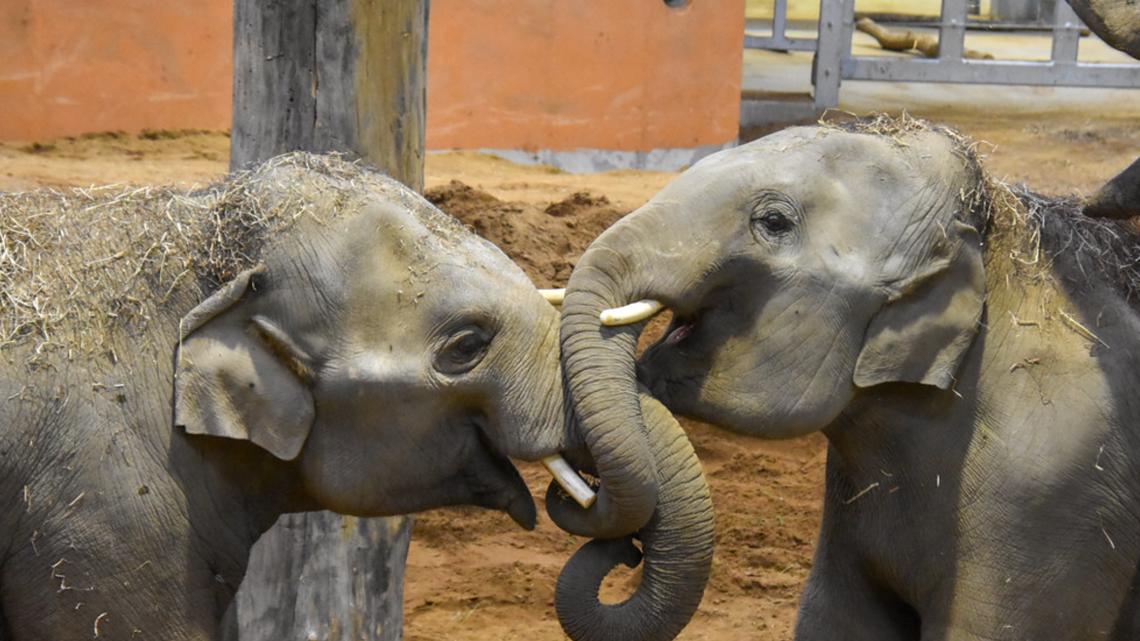An mRNA vaccine shows promise by helping young elephants Sanjay and Kabir test negative for EEHV at Cincinnati Zoo.
HOUSTON — A groundbreaking mRNA vaccine developed to fight a deadly virus affecting young elephants is showing promising results at the Cincinnati Zoo & Botanical Garden.
Two young male elephants, Sanjay and Kabir, who were vaccinated in 2024, later tested positive for Elephant Endotheliotropic Herpesvirus (EEHV). Thanks to the vaccine, both elephants are now testing negative and remain healthy, zoo officials announced.
“This vaccine, created by Baylor College of Medicine and Houston Zoo, is a tremendous source of hope for the future of Asian elephants, both in zoos and in the wild,” said Dr. Mike Wenninger, director of animal health at the Cincinnati Zoo. “We are incredibly grateful for this collaboration and that it helped save Sanjay and Kabir’s lives.”
A milestone in elephant conservation
EEHV is the leading cause of death for juvenile Asian elephants in North America and Europe, with a mortality rate between 60% and 80%. The virus has also killed hundreds of elephants in their native range countries, impacting both those in human care and in the wild.
The mRNA vaccine was developed through a partnership between the Houston Zoo and Baylor College of Medicine (BCM). This collaboration, led by virologist Dr. Paul Ling, has already advanced EEHV detection and treatment protocols used worldwide.
“This is a powerful example of what can be achieved through collaboration among AZA-accredited zoos,” officials from the Cincinnati and Houston Zoos said. “The success of this vaccine offers real hope for the future of Asian elephant conservation and opens the door for national and international distribution to protect this endangered species.”
How the vaccine helped
In 2023, four elephants arrived at the Cincinnati Zoo from Dublin Zoo. Testing revealed that Sanjay and Kabir lacked maternal antibodies to EEHV, making them especially vulnerable. To monitor their health, the zoo established an in-house EEHV PCR lab and gave the elephants plasma transfusions from virus-exposed elephants. However, antibody levels from the transfusions didn’t reach those seen in elephants that survived natural infections.
Recognizing the ongoing risk, the Cincinnati Zoo became one of the first facilities to adopt the new vaccine. Both Sanjay and Kabir received their doses in Fall 2024. Early results showed that both developed strong antibody responses, approaching levels seen in elephants that had survived EEHV naturally. By February 2025, those antibody levels remained high.
When a herd mate, Sabu, began shedding EEHV in his trunk secretions, Sanjay and Kabir were at risk of exposure. In February, low levels of EEHV were detected in Sanjay’s blood, an early indicator of infection. However, Sanjay never developed symptoms, and the virus cleared from his system without the need for aggressive treatment. Kabir also experienced a mild EEHV infection and recovered quickly without intervention.
These are the first documented cases of natural EEHV exposure following vaccination, suggesting that the vaccine can prevent severe disease.
A team effort in vaccine development
The vaccine’s development involved several key partners, including Dr. Jeroen Pollet of the National School for Tropical Medicine, the International Elephant Foundation (IEF), Colossal Biosciences, and the Houston Methodist Center for RNA Therapeutics.
Officials say the next step could be distributing the vaccine more widely to help protect endangered Asian elephants both in zoos and in the wild.
